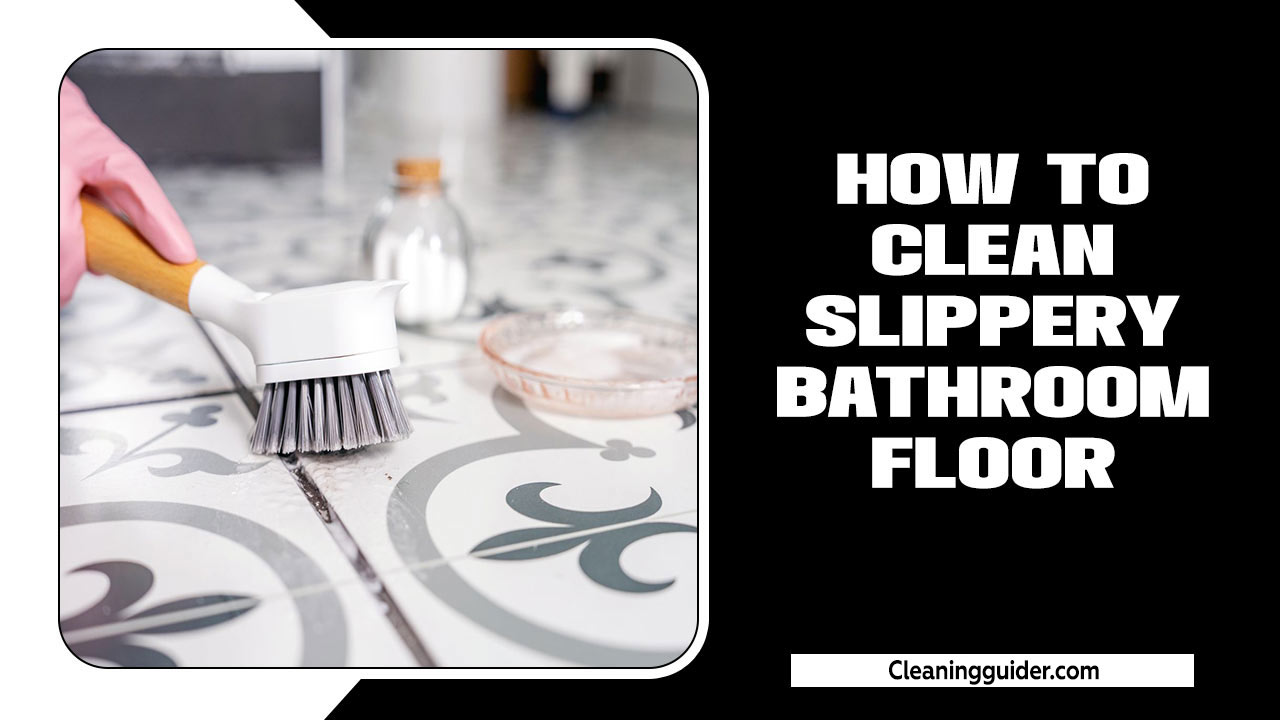Mold is a common problem that can occur in any household, but it is especially prevalent in bathrooms. The bathroom ceiling, in particular, is a prime location for mold growth due to its constant exposure to moisture and high humidity levels.
Not only is mold unsightly and unpleasant, but it can also pose health risks if left untreated. As a result, it is crucial to understand what causes mold in bathroom ceilings and how to prevent it.
Here, we will explore the various factors that contribute to mold growth, including poor ventilation, water leaks, and inadequate cleaning practices. We will also discuss the potential health hazards of mold and the importance of addressing it promptly. Furthermore, we will provide practical tips and solutions for removing and preventing mold from forming on your bathroom ceiling.
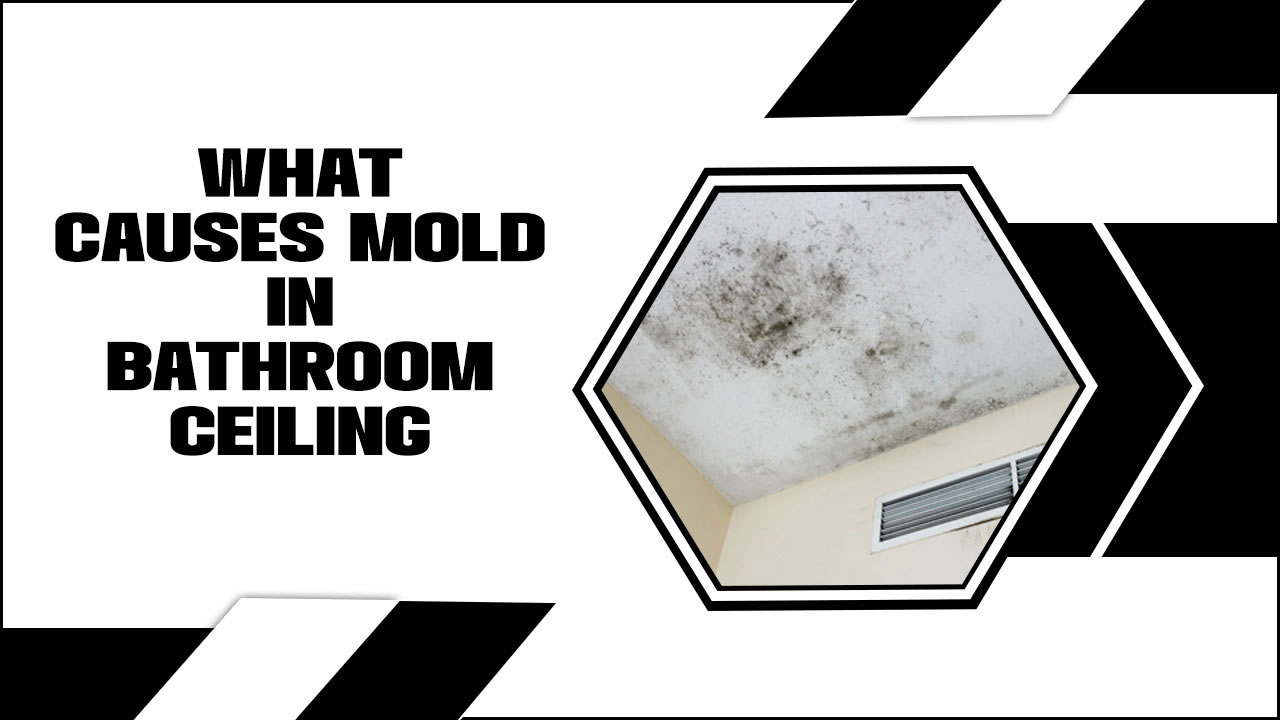
What Causes Mold In Bathroom Ceiling – Explain In Detail

Here to know the answer on what causes mold in bathroom ceiling? Mold in bathroom ceilings is typically caused by excessive moisture and poor ventilation. When hot showers or baths are taken, steam rises and can condense on the ceiling surface.
If there is insufficient ventilation or inadequate airflow, this moisture can become trapped, creating a damp environment that promotes mold growth. Other factors that contribute to mold growth include leaks in plumbing pipes, roof leaks, or high humidity levels in the bathroom.
To prevent mold in the bathroom ceiling, it is important to ensure proper ventilation, repair any leaks promptly, and maintain optimal humidity levels. Regular cleaning and removing any visible mold growth with appropriate solutions is also recommended.
Excessive Moisture And Humidity

Excessive moisture and humidity can contribute to the growth of mold in various areas of a home, including the bathroom ceiling. Mold thrives in damp environments, and when humidity levels are high, it provides the perfect conditions for mold spores to multiply. To address mold in the bathroom ceiling, it is essential to identify and eliminate the source of moisture. Here are some steps you can take:
- Ventilation: Ensure that your bathroom has proper ventilation, such as an exhaust fan or open window, to remove excess moisture from the air. Use the fan or keep the window open during and after showers or baths.
- Repair Leaks: Check for any water leaks in the bathroom, such as from pipes, faucets, or the showerhead. Repair any leaks promptly to prevent moisture buildup.
- Reduce Humidity: Use a dehumidifier in your bathroom to control humidity levels. This can help remove excess moisture from the air and prevent mold growth.
Inadequate Ventilation
Inadequate ventilation refers to a situation where there is not enough airflow or air exchange in a particular space. This can lead to various issues, such as the accumulation of moisture, unpleasant odors, and the growth of mold and mildew.
The presence of mold in the bathroom ceiling, and inadequate ventilation can be a common cause. Without proper airflow, the moisture produced during activities like showering or bathing can become trapped in the bathroom, leading to excessive humidity levels. This high humidity, combined with limited ventilation, creates a favorable environment for mold growth.
To address this issue, it is essential to improve the ventilation in your bathroom. This can be done by ensuring that there is a functioning exhaust fan or window that allows for proper airflow. Regularly using the exhaust fan during and after showering can help remove excess moisture from the air. Additionally, keeping the bathroom door open when possible and ensuring that any leaks or water damage are promptly repaired can also contribute to better ventilation.
Leaks And Water Damage
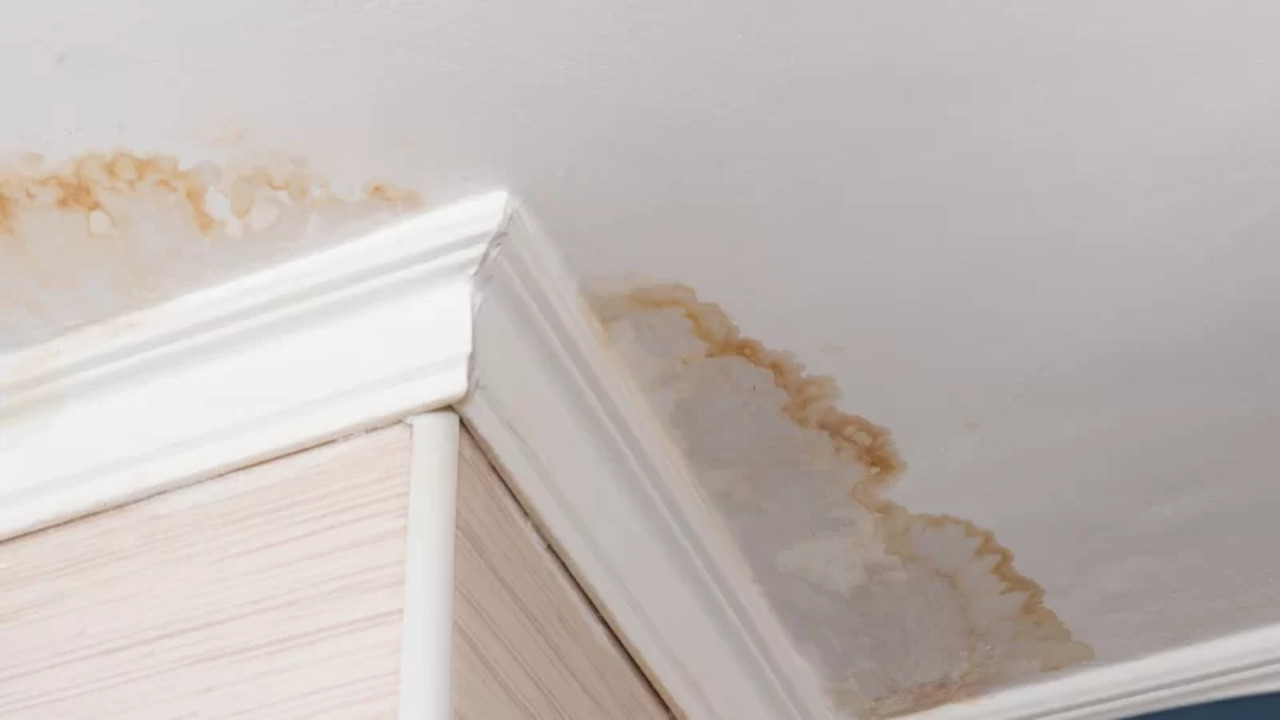
the main causes of mold growth in bathroom ceilings. When there are leaks in the plumbing system or roof, water can seep into the ceiling, creating a moist environment that is highly conducive to mold growth. A variety of issues, such as faulty plumbing connections, damaged pipes, or a compromised roof, can cause this. Additionally, inadequate ventilation in the bathroom can trap moisture, further exacerbating the problem.
The combination of moisture and lack of airflow provides the perfect breeding ground for mold spores to thrive and spread. To prevent mold growth in bathroom ceilings, it is crucial to address any leaks or water damage promptly and ensure proper ventilation in the bathroom to keep moisture levels in check. Regular inspections and maintenance can help identify and fix potential sources.
Improper Insulation
Improper insulation can contribute to the growth of mold in the bathroom ceiling. When insulation is not properly installed or is lacking in certain areas, it can lead to condensation buildup. This moisture can create an ideal environment for mold to grow.
Inadequate insulation can also cause temperature imbalances, resulting in areas of the ceiling becoming colder than others, further promoting mold growth. To prevent mold in the bathroom ceiling, it is important to ensure proper insulation is installed and to address any leaks or ventilation issues that may be contributing to excessive moisture.
Identifying Common Types Of Bathroom Mold
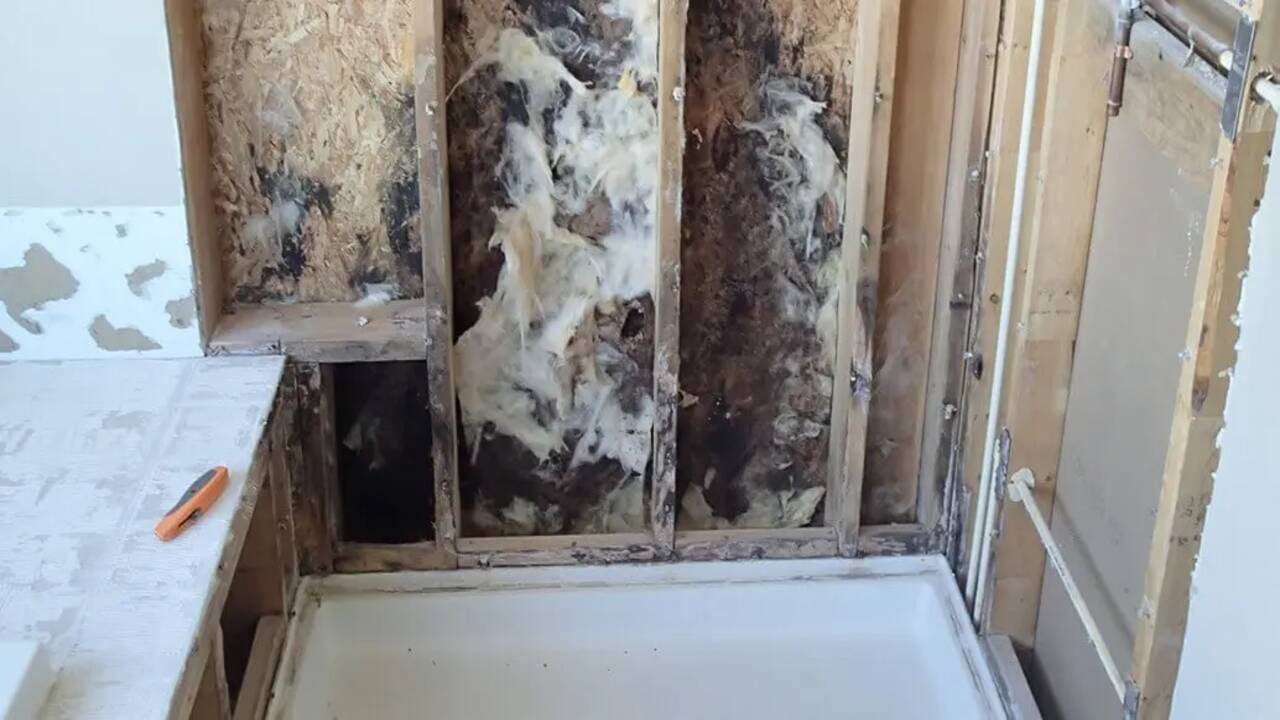
Identifying common types of bathroom mold can help you understand the potential dangers and take appropriate measures to deal with them. Here are some common types of bathroom mold that you may come across, specifically on the ceiling:
- Aspergillus: This is a common type of mold that appears as dark spots or patches. It can cause respiratory issues and allergies in some individuals.
- Cladosporium: Cladosporium mold typically appears as black or dark green patches. It can trigger allergic reactions and respiratory problems, especially in people with weakened immune systems.
- Stachybotrys chart arum: Also known as black mold, Stachybotrys chartarum is usually dark black or greenish-black in color. It thrives in damp environments and can cause severe health issues, including respiratory problems, allergies, and even neurological symptoms.
Health Risks Associated With Bathroom Mold
Health risks associated with bathroom mold can be significant. When mold grows in the bathroom, it can release spores into the air that can be inhaled, potentially leading to respiratory issues such as allergies, asthma, and other respiratory infections. In some cases, exposure to certain types of mold, such as black mold (Stachybotrys chartarum), can cause more severe health problems, including lung infections and toxic reactions.
It is important to address bathroom mold promptly and effectively to minimize health risks. Regular cleaning, proper ventilation, and addressing any sources of moisture can help prevent the growth of mold in the bathroom. If you suspect significant mold growth or have health concerns related to bathroom mold, it is recommended to consult a professional for proper assessment and remediation.
Prevention And Maintenance Tips
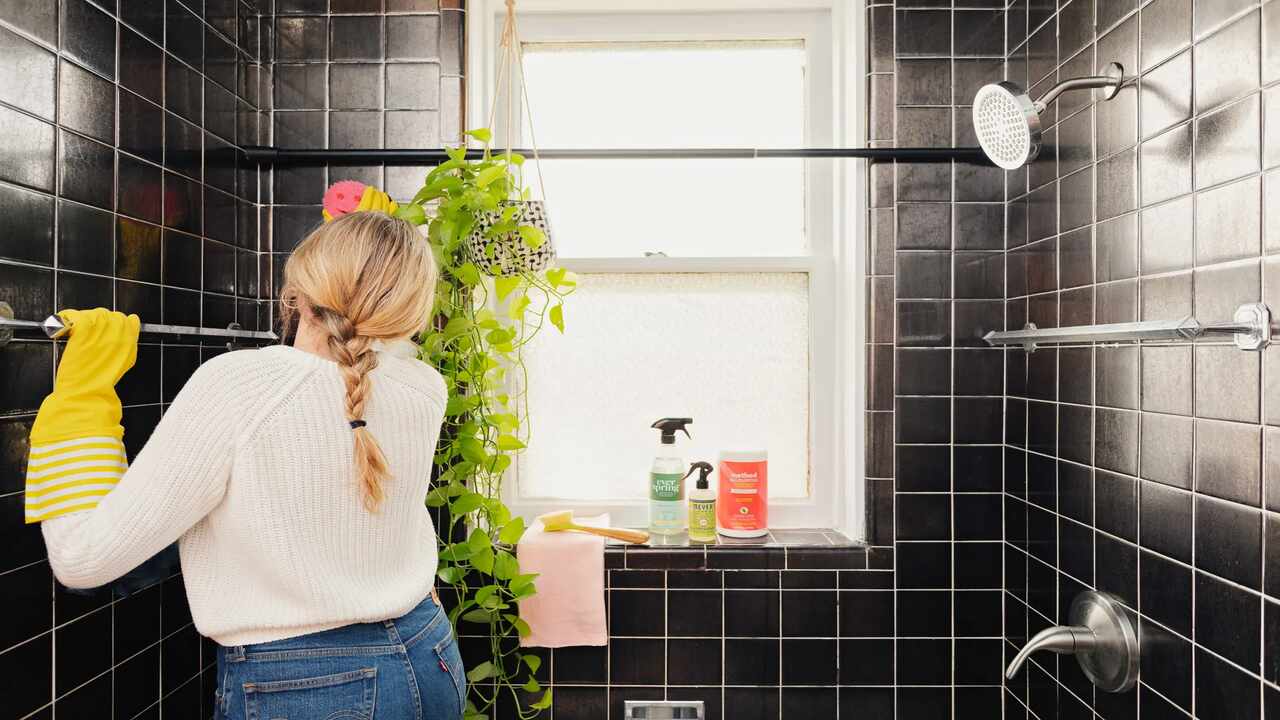
maintaining the longevity and functionality of any system or equipment, prevention, and maintenance are crucial factors. Prevention involves taking proactive measures to identify and address potential issues before they escalate into major problems. This includes conducting regular inspections, implementing safety protocols, and investing in quality materials and components. Preventing and Maintaining Mold in Bathroom Ceiling:
- Keep The Bathroom Well-Ventilated: Ensure there is proper airflow in the bathroom by using exhaust fans or opening windows after showers or baths. This helps to prevent excess moisture buildup.
- Control Humidity Levels: Use a dehumidifier or air conditioner in the bathroom to maintain humidity levels below 50%. High humidity creates a favorable environment for mold growth.
- Fix Leaks And Water Damage Promptly: Check for any leaks in pipes or faucets and repair them immediately. Also, address any water damage in the ceiling or walls, as these conditions can encourage mold growth.
- Clean And Dry Regularly: Regularly clean bathroom, including the ceiling, with mold-inhibiting cleaners. Dry the area thoroughly after cleaning to prevent moisture accumulation.
- Use Mold-Resistant Paint Or Coatings: Consider using mold-resistant paint or coatings on the bathroom ceiling. These products help to inhibit mold growth and make it easier to clean the surface.
Removing And Treating Existing Mould
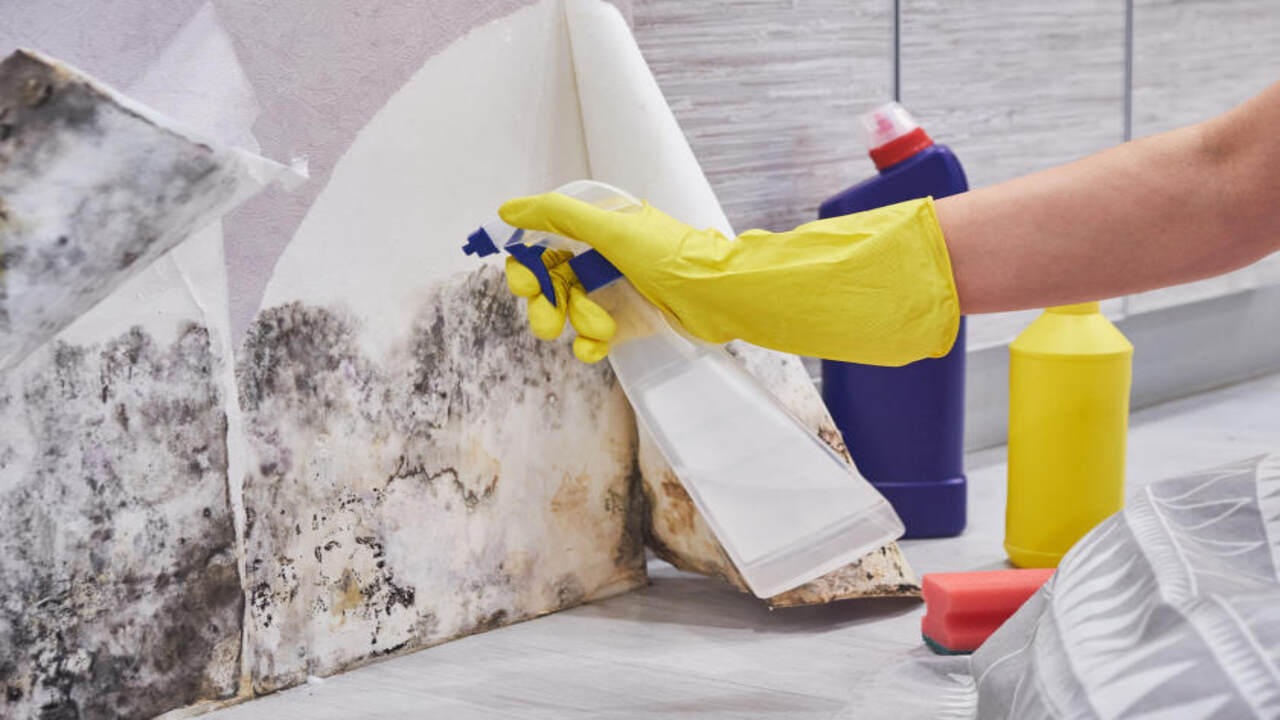
Removing and treating existing mould, it is essential to approach the situation with utmost diligence and expertise. Mould growth not only poses significant health risks but also compromises the structural integrity of buildings. Therefore, it is crucial to address the issue promptly and effectively. To remove and treat existing mold in the bathroom ceiling, follow these steps:
- Safety Precautions: Wear protective gear such as gloves, a mask, and goggles to avoid direct contact with mold spores.
- Identify The Source: Determine the cause of the mold growth, such as a leak or high humidity, and fix it to prevent future mold growth.
- Ventilate The Area: Open windows and use fans to improve air circulation during the cleaning process.
- Prepare A Cleaning Solution: Mix a solution of equal parts water and vinegar or bleach. Alternatively, you can use a commercial mold removal product following the manufacturer’s instructions.
- Clean The Affected Area: Use a scrub brush or sponge soaked in the cleaning solution to scrub the moldy surface gently. Ensure you cover the entire affected area and remove as much mold as possible.
- Rinse And Dry: After scrubbing, rinse the area with clean water to remove any residue. Use a clean cloth or towel to dry the
Professional Mold Remediation Options
Professional mold remediation options refer to the services provided by trained professionals to effectively remove and treat mold growth in various areas, including bathroom ceilings. When dealing with mold in a bathroom ceiling, it is important to hire professionals who specialize in mold remediation to ensure thorough and safe removal. Some common professional mold remediation options include:
- Inspection and Assessment: Professionals will conduct a thorough inspection to identify the extent of the mold growth and assess the underlying causes. This helps in developing an effective remediation plan.
- Containment: To prevent the spread of mold spores, professionals may set up containment barriers using plastic sheets and negative air pressure machines.
- Mold Removal: Trained technicians will safely remove the mold from the affected area. This may involve physically scrubbing or using specialized cleaning agents to eliminate mold growth.
- Mold Disposal: Professionals will properly dispose of the mold-infested materials to prevent contamination and ensure safe removal.
Conclusion
While it may seem like a small issue, mold in the bathroom ceiling can actually be a sign of a larger problem. It is important to address the issue promptly and thoroughly to prevent further mold growth and potential health hazards.
By identifying and addressing the root causes of mold growth, such as poor ventilation or water leaks, we can ensure a healthier and more comfortable living environment.
As always, it is best to consult a professional for proper mold remediation and prevention techniques. Don’t let mold in your bathroom ceiling become a bigger and potentially more expensive issue in the long run. We hope now you understand what causes mold in bathroom ceiling.
FAQ
1.What Are The Main Factors That Cause Mold To Grow On Bathroom Ceilings?
Ans: The main factors that cause mold to grow on bathroom ceilings are high humidity levels, poor ventilation, and water leaks. Bathrooms often have high moisture levels due to steam from showers and inadequate airflow. Without proper ventilation, the moisture in the air can condense on the ceiling, providing an ideal environment for mold growth.
2.How Does Moisture Accumulation Contribute To Mold Growth On Bathroom Ceilings?
Ans: Moisture accumulation in bathrooms creates a favorable environment for mold growth on ceilings. When hot showers or baths produce steam, the moisture in the air condenses on cool surfaces like the ceiling. If this moisture is not promptly dried, it provides the ideal conditions for mold spores to thrive. Mold requires moisture, a food source, and a suitable temperature to grow, and a damp bathroom ceiling provides the necessary moisture.
3.Are There Any Specific Building Or Ventilation Issues That Can Lead To Mold Growth In Bathroom Ceilings?
Ans: Yes, there are specific building and ventilation issues that can lead to mold growth in bathroom ceilings. Some common factors include inadequate ventilation, lack of proper insulation, water leaks or condensation, and poor or damaged sealing around fixtures or vents. These issues can create a moist environment that promotes mold growth.
4.Can Poor Insulation Or Inadequate Ventilation Contribute To Mold Growth On Bathroom Ceilings?
Ans: Yes, poor insulation and inadequate ventilation can contribute to mold growth on bathroom ceilings. Poor insulation can lead to condensation forming on the ceiling, which creates a damp environment that is conducive to mold growth. Inadequate ventilation can prevent proper air circulation and moisture removal, allowing moisture to build up and promote mold growth.
5.Are There Any Common Mistakes Homeowners Make That Can Lead To Mold Growth On Bathroom Ceilings?
Ans: Yes, there are common mistakes homeowners make that can lead to mold growth on bathroom ceilings. One common mistake is inadequate ventilation, which can create a moist environment that promotes mold growth. Another mistake is failing to address leaks or water damage promptly, allowing moisture to accumulate and create conditions for mold.



